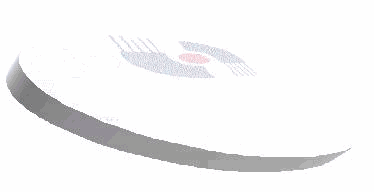| Objectives |
|
To further develop the fundamental knowledge
of communications theories and their applications in digital communications.
To expose the students to information theory
and coding techniques.
To further understand antenna theory and radio
propagation.
|
| References/Textbooks |
|
Simon Haykin, “Communication Systems”, John Wiley
& Sons, 1994.
L.W.Couch II, “Modern Communication Systems”,
Prentice Hall, 1995.
Simon Haykin, “Digital Communications”, John
Wiley & Sons, 1988.
Roger L.Freeman, “Telecommunication Transmission
Handbook”, John Wiley & Sons, 1991.
M.Schwartz et al, “Communication Systems and
Techniques”, IEEE, 1996.
J.Dunlop et al, “Telecommunications Engineering”,
Chapman & Hall, 1987.
R.E.Ziemar et al, “Principles of Communications”,
John Wiley & Sons, 1988.
D.R.Smith, “Digital Transmission Systems”, Van
Nostrand Reinhold, 1985.
M Sexton et al, “Transmission Networking: SONET
and the Synchronous Digital Hierarchy”, Artech House, 1992.
|
| Contents |
Chapter
1 Frequency Spectrum
-
Review of Fourier analysis, Fourier
transform of pulses; characteristics of distortionless signal transmission;
signal distortion over bandlimited channel, non-linear channel, multipath
propagation channel, fading channel and additive white Gaussian noise channel.
|
Chapter
2 Pulse Modulations
-
Pulse amplitude modulation, Pulse
width modulation, Pulse position modulation.
|
Chapter
3 Digitization of Speech Signals
-
Sampling theorem, sample-and-hold,
time-division multiplexing, Pulse code modulation (PCM), quantization noise,
companding, Differential PCM, Delta modulation, overload noise, Adaptive
delta modulation.
|
Chapter
4 Baseband Data Transmission and Digital Modulation Techniques
-
Line coding, Intersymbol interference,
Nyquist waveshaping, eye pattern, adaptive equalization. Transmission over
bandpass channel. ASK, FSK, PSK, DPSK, M-ary modulation, Continuous phase
FSK, MSK.
|
Chapter
5 Performance of Digital Communication Systems
Statistical properties of noise
and random signals. Gaussian and Laplacian distribution, Gaussian noise,
error function, probability of error calculation, error rates in binary
and M-ary transmission, Error analysis of PCM repeater systems. Narrowband
noise, Rayleigh distribution and fading, Rician distribution, Matched filter
Receiver.
|
Chapter
6 Information Theory and Coding
Discrete message, concept and measurement
of information, entropy, information rate, redundancy, Shannon's theorem,
Shannon, Fano and Huffman coding algorithm, Linear block code error correction.
|
Chapter
7 Antenna and Radio propagation
Concept of directivity gains, radiation
resistance, impedance matching, effective length and capture area of antenna,
Gain calculation of simple radiation patterns. Study of some commonly used
antenna in communications. Antenna array. Ionosphere, sky waves, critical
frequency, maximum usable frequency, skip zone, skip distance, fading,
tropospheric scattering. Radio link calculation, VHF and microwave link.
|
| Laboratory |
-
Design and construction of a PWM Converter.
-
Design and construction of resonant inverter
ballast for tube lights.
|
| Revised
Lecture Notes/Lecture Slides |
-
Not available at this moment.
|
| Revised
Tutorial Questions and Solutions |
-
Not available at this moment.
|
| Revised
Assignment Questions and Solutions |
-
Not available at this moment.
|
| Supplements |
-
Not available at this moment.
|
Disclaimer:
Host is not responsible for any damage, file
corruption, disconnection, viruses, download of copyrighted material without
permission before, during or after visiting this web site. |
